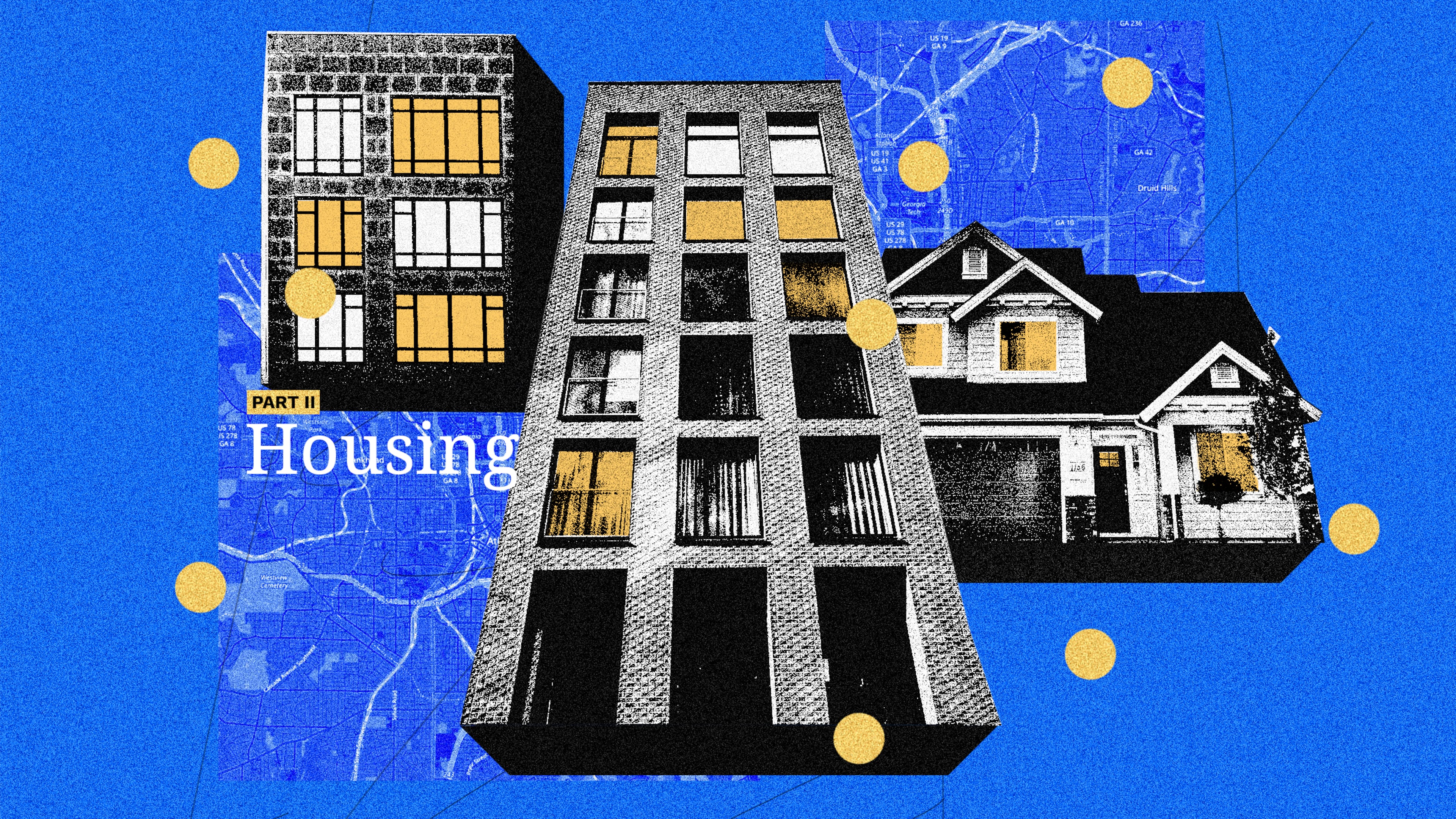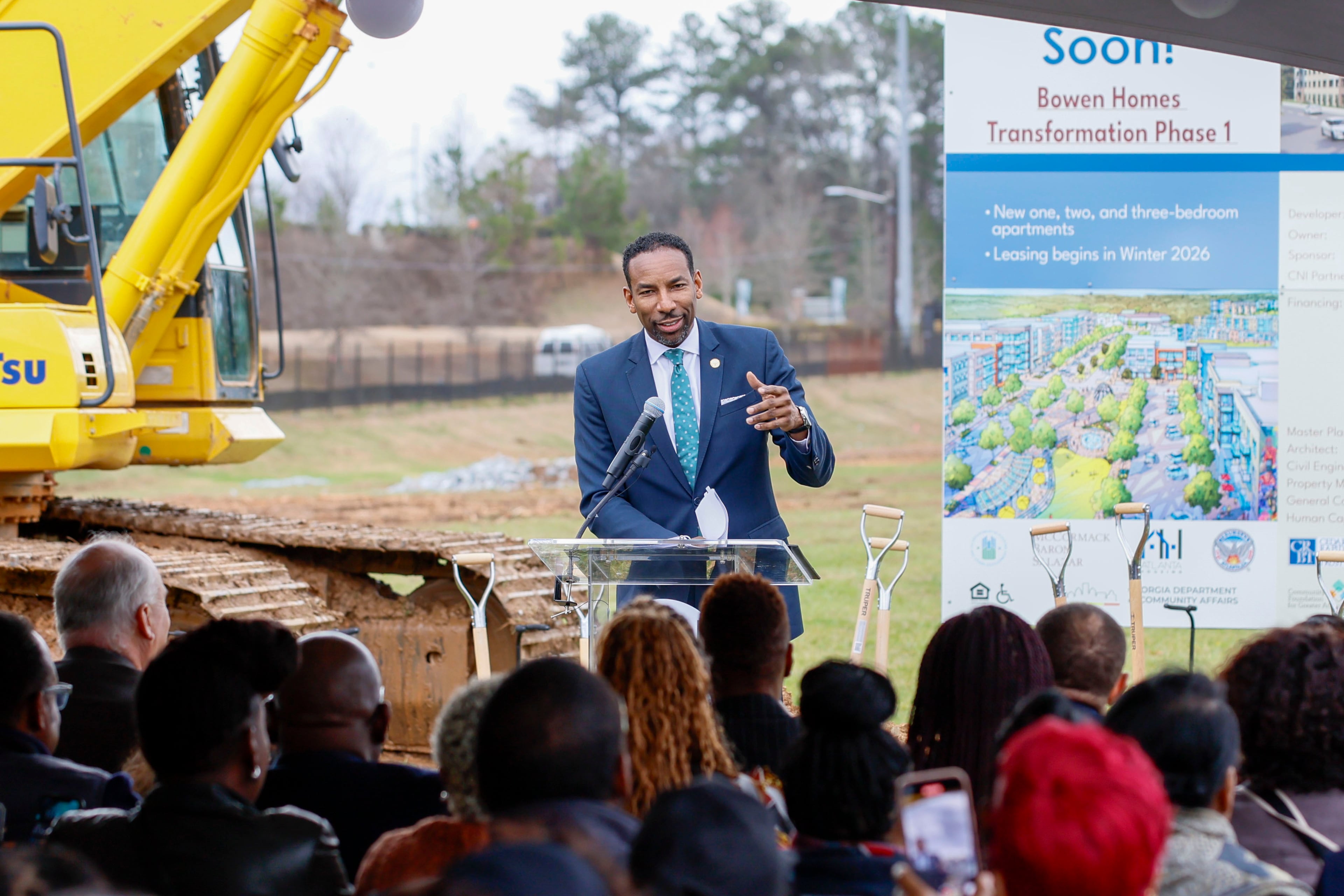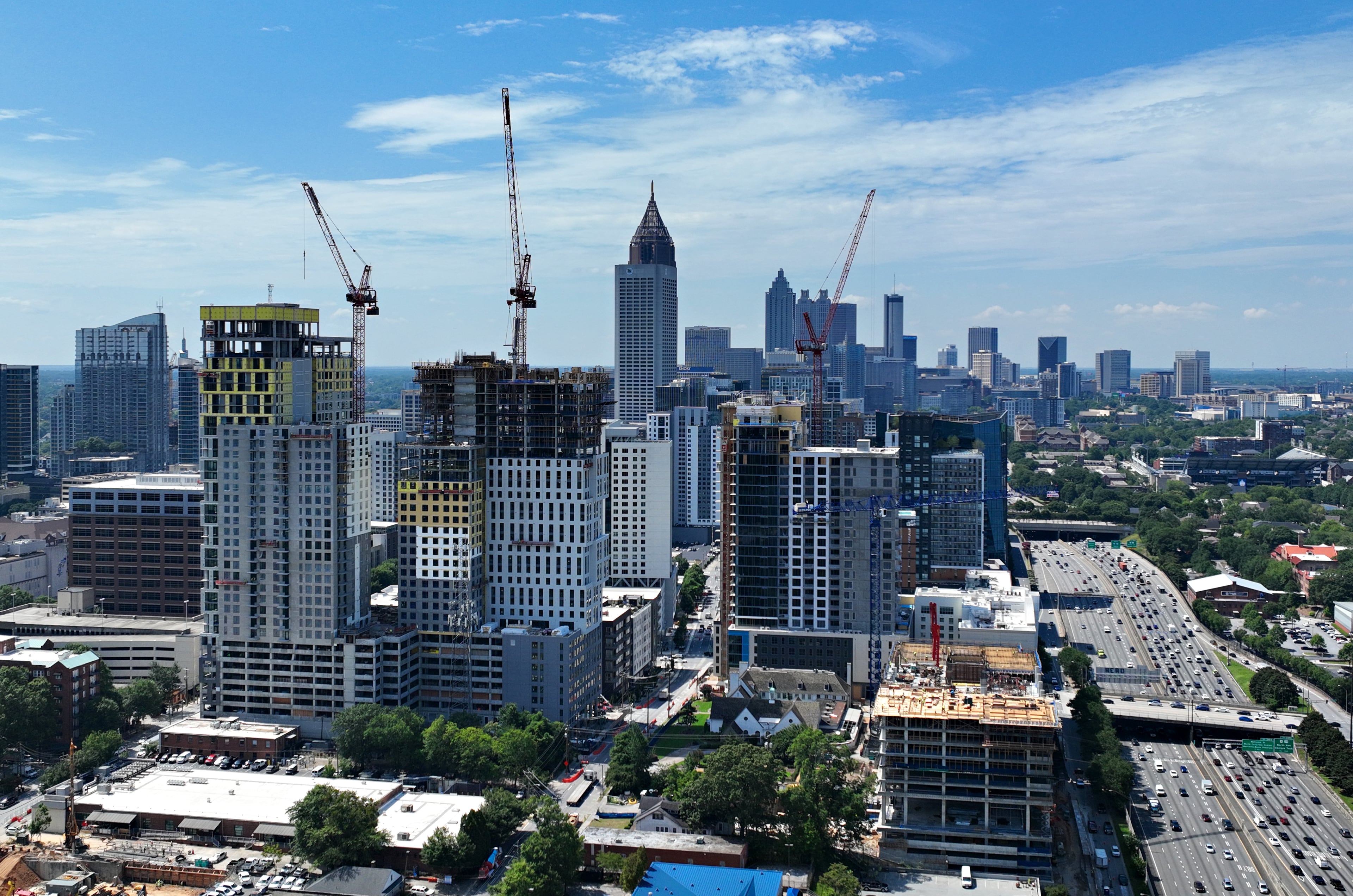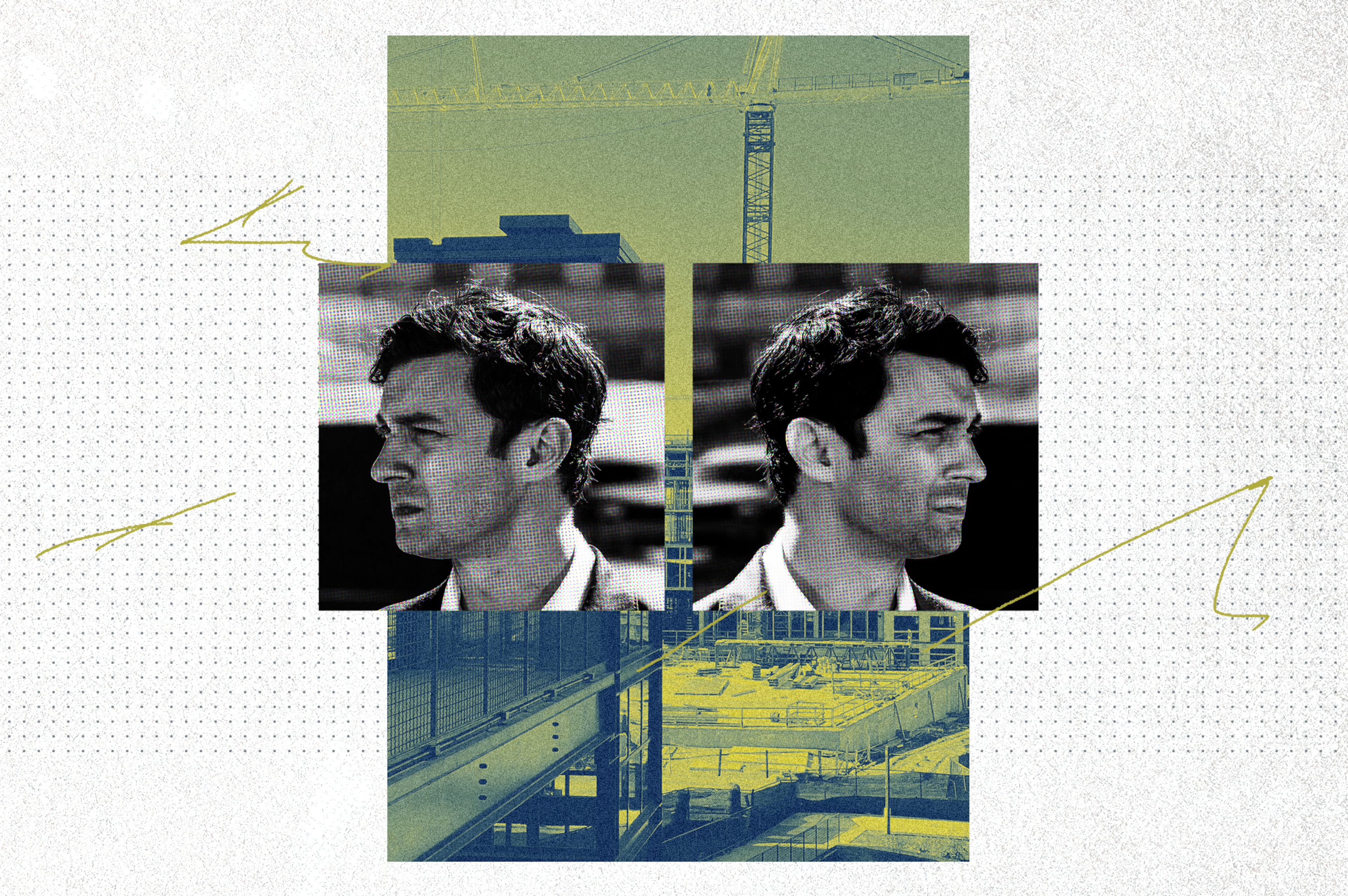Is Mayor Dickens’ housing policy built on a strong foundation?

Workforce housing atop a city fire station. Repurposing of COVID-19 shipping containers for rapid housing of unhoused people downtown. Creation of a European-style nonprofit to spur redevelopment on public land.
During a national housing shortage and affordability crisis, it seems every idea has been on the table as Mayor Andre Dickens tries to deliver on a promise of creating or preserving 20,000 affordable housing units over two terms.
Courtney English, the mayor’s chief of staff, said in less than four years the city had come close to building or developing 12,000 units, meaning the mayor is well on track to reach his goal if, as expected, he wins a second term. He is up for reelection Nov. 4, and is likely to defeat three challengers who are all outgunned in both money and name recognition.
Often seen around town in a hard hat and shoveling dirt at groundbreakings, or clutching oversized scissors at ribbon cuttings, Dickens is fond of calling housing his “love language.” His reach extends beyond Atlanta, as his office fields calls from officials across the country wanting to know how he does it.
“We have been super successful in using public land for affordable housing development,” English said. “We’ve made the largest investment in the city of Atlanta’s history in homelessness.”
National media and universities have homed in on Atlanta’s housing model and its innovations have become an example for other cities to follow. Amid the plaudits, however, some housing experts and advocates argue the mayor must do more to address the city’s housing crisis.
Compared with Dickens’ predecessor, Democrat Keisha Lance Bottoms, there was about a 20% to 40% increase in affordable housing development, with the city producing, on average, 3,200 units a year, according to housing expert and author Dan Immergluck, professor emeritus at Georgia State University, who looked at housing data from both administrations.
Even with that uptick the mayor’s wins are “overhyped,” Immergluck said. He believes the goal of creating or preserving 20,000 units means the city is not producing enough housing to even run in place.
“I’ve been increasingly a little bit disappointed, especially on some big issues,” said Immergluck, who was on Dickens’ transition team after his 2021 election win.
Immergluck said there was a scarcity of units for very low-income households — the people most at risk of eviction or becoming homeless. He noted a reliance on federal rather than local dollars for housing, and a meager investment in the city’s Housing Trust Fund for deeply affordable housing developments.
There have been questions about how money from the fund is spent after an Atlanta Civic Circle investigation revealed it was used for city staff salaries and debt on housing loans rather than housing for very low-income families.

According to the City of Atlanta Affordable Housing Tracker the majority of units, about 9,700, are for people making 51% to 120% of area median income (AMI). U.S. Department of Housing and Urban Development data cited by Invest Atlanta shows those income limits range from about $57,000 to $137,000 for a family of four.
The city has created 1,387 units for people earning 31% to 50% of AMI, or about $34,000 to $57,000 for a family of four. Only 670 units, or about 6%, are set aside for those earning 30% AMI or less.
Matthew Nursey, a tenant organizer and affordable housing policy advocate for the Housing Justice League, said his group’s policy platform recommends the creation of at least 80,000 units by 2030. The group wants the city to pledge $100 million for the Housing Trust Fund.
He said the grip of outside investors and corporate landlords on the city’s affordable housing stock means it vanishes almost as quickly as it’s raised.
“The rent gets increased to market or above market rate, and is forcing people out. And that’s happening at a higher rate than the 20,000 units are being built,” Nursey said.
At the same time, Nursey and Immergluck said Dickens deserves credit for assembling a Housing Strike Force bringing together MARTA, Invest Atlanta, Atlanta Public Schools and other agencies to identify public land, and then creating the Atlanta Urban Development Corporation, or AUDC.
The mayor drew inspiration from the “Copenhagen” and “Vienna” social housing models that Montgomery County, Maryland, and Seattle have adapted to focus on mixed-income housing on public land. The AUDC uses a public-private partnership model to lower development costs, ramp up production and ensure housing remains permanently affordable on public land it controls.
Josh Humphries was Dickens’ senior housing adviser for much of his first term before joining the California Community Foundation in Los Angeles in July. He said Atlanta has become a model for other U.S. cities and “nowhere in the country is doing public land development work at the scale that Atlanta is.”

Projects include a Midtown fire station with housing, a shipping container project for the unhoused called The Melody, and revamping the Atlanta Motel into micro apartments. Dickens backed legislation to crack down on blighted properties, and last year announced a $60 million commitment to homelessness.
“We just recently expanded the city’s anti-displacement tax fund, which freezes taxes for a 20-year period for legacy residents throughout the city,” English added.
There have been missteps.
In October 2023, the mayor enlisted civil rights lawyer Ben Crump to file a class-action lawsuit against the owner of the now-demolished Forest Cove apartment complex.
Almost two years later, no complaint has been filed. The city plans to rehouse people in a new development in the Thomasville Heights neighborhood in southeast Atlanta. But some former residents told the City Council last year that they had been forced out of city limits and were living in conditions worse than Forest Cove.
There was the tragic death of homeless man Cornelius Taylor, who was killed when a Department of Public Works vehicle clearing the camp bulldozed over his tent while he was still inside.
The mayor convened a Homelessness Task Force and adopted new safety guidelines. But activists and advocates for the homeless have called for the city to permanently end sweeps they call cruel and inhumane.
“When it comes to housing, the death of Cornelius Taylor is the biggest black spot … The city has continued to act like it’s business as usual,” Nursey said.
In the meantime, residents have felt the impact of soaring rental and home prices, with fears for longtime residents who risk being priced out of a city that not so long ago was majority Black.
As Dickens eyes four more years, English said the mayor will renew a focus on homeownership. According to city data, more than 10,000 units created or preserved are rentals, and about 1,000 units are for homeowners.
“You will see us move very aggressively in that direction … starting with folks like our teachers, our firefighters, police officers, city employees,” English said.
During his campaign, Dickens unveiled an ambitious $5 billion plan, the Neighborhood Reinvestment Initiative, to revitalize the city’s south and west sides by extending the shelf life of eight tax allocation districts beyond 2050.
If approved, Dickens wants to draw on $1.3 billion so the city can build an additional 10,000 units of single- and multifamily housing.
Humphries said other headwinds, including economic uncertainty, high interest rates and Trump administration tariffs, could pose challenges in Dickens’ second term.
He won’t bet against the mayor finding a way forward.
“I think that four more years of Mayor Dickens is four more years of good things for the city of Atlanta,” Humphries said.
With Atlanta Mayor Andre Dickens likely to win a second term, The Atlanta Journal-Constitution looks at five topics of importance to the city ... and beyond.
Tuesday: Regionalism
Wednesday: Housing
Thursday: Infrastructure
Friday: Transportation
Saturday: Crime


